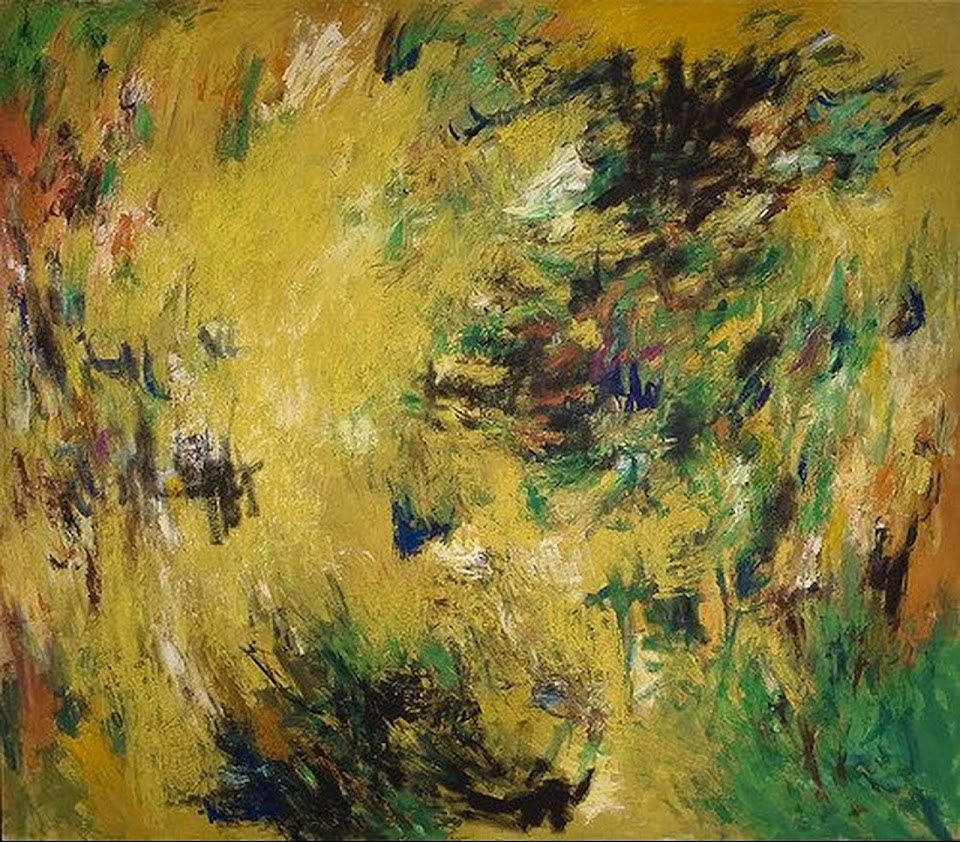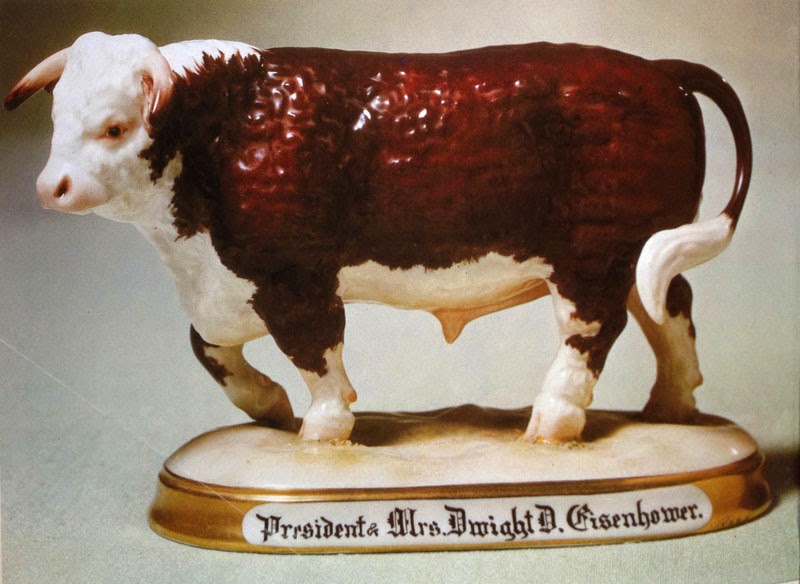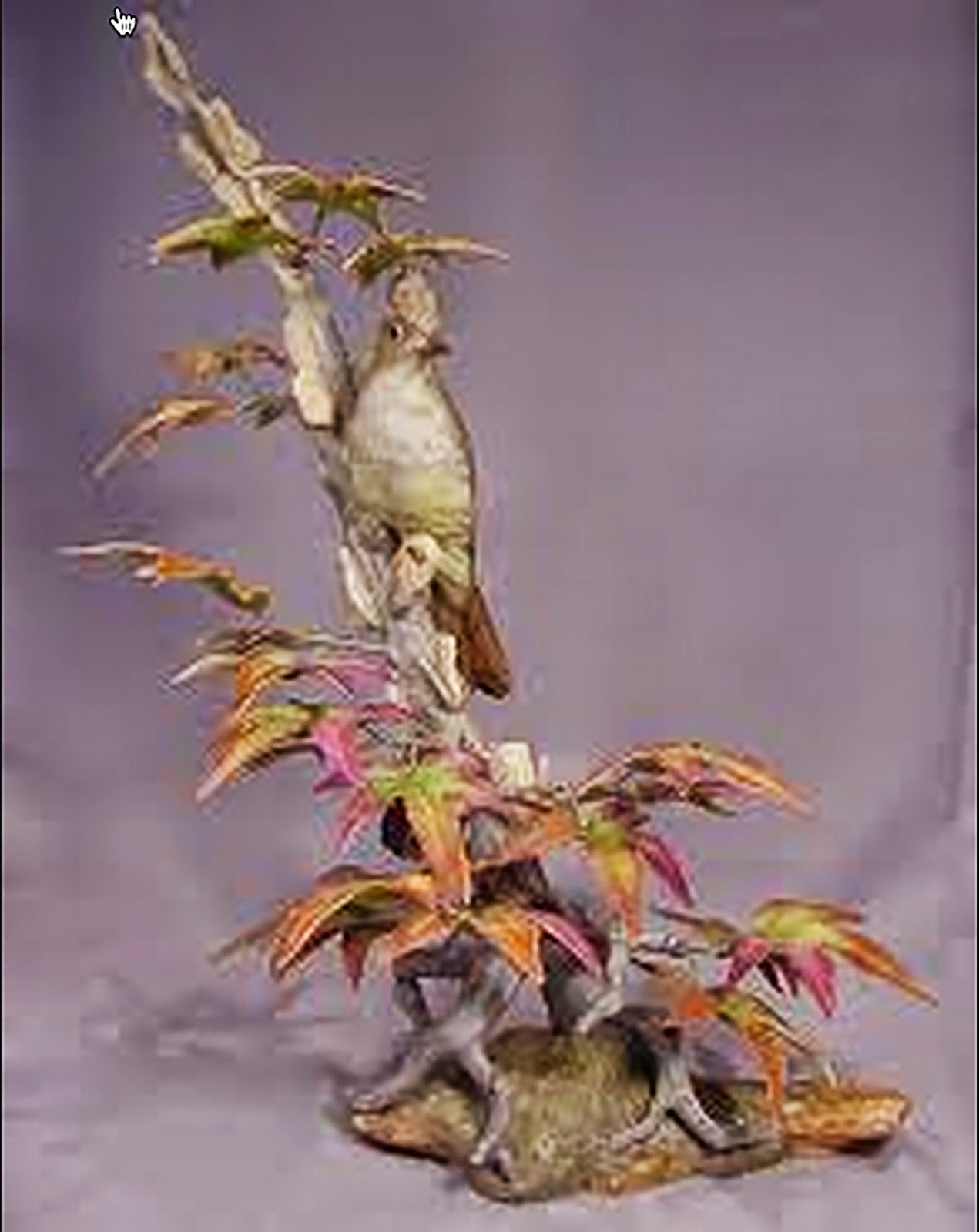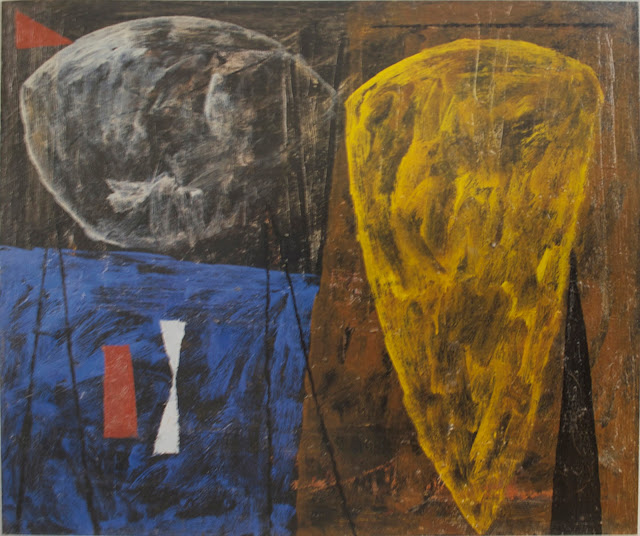According to Marilyn Stokstad, the art historian:
"Expressionism (is) the manipulation of formal or representational elements to convey intense feelings."
Edward Marshall Boehm explained his choice of porcelain as the medium for his art as follows:
"Porcelain is a permanent creation. If properly processed and fired, its colors will never change; and it can be subjected to extreme temperatures without damage. It is a medium in which one can portray the everlasting beauty of form and color of wildlife and nature."
Frank J. Cosentino commented on the art of Edward Marshall Boehm:
"Its grandeur is in its perfection. It is a disciplined art, mastering the demands of the ancient and distinguished craft of porcelain making."
Edward Marshall Boehm was a pioneer American figurative expressionist porcelain sculptor. He created porcelain sculptures between 1950 until his death in 1969 in Trenton, New Jersey. During his lifetime the introduction and closing dates of his limited edition sculptures were well documented.
After the death of his wife Helen who functioned as his manager the Studio has changed ownership several times. Today the name Boehm is being used to create porcelain by The Boehm Porcelain Company of Trenton, NJ. It reopened August 15, 2016. It is using the name "Boehm" along with a modified hallmark of Edward Marshall Boehm.
"Expressionism (is) the manipulation of formal or representational elements to convey intense feelings."
Edward Marshall Boehm explained his choice of porcelain as the medium for his art as follows:
"Porcelain is a permanent creation. If properly processed and fired, its colors will never change; and it can be subjected to extreme temperatures without damage. It is a medium in which one can portray the everlasting beauty of form and color of wildlife and nature."
Frank J. Cosentino commented on the art of Edward Marshall Boehm:
"Its grandeur is in its perfection. It is a disciplined art, mastering the demands of the ancient and distinguished craft of porcelain making."
Edward Marshall Boehm was a pioneer American figurative expressionist porcelain sculptor. He created porcelain sculptures between 1950 until his death in 1969 in Trenton, New Jersey. During his lifetime the introduction and closing dates of his limited edition sculptures were well documented.
After the death of his wife Helen who functioned as his manager the Studio has changed ownership several times. Today the name Boehm is being used to create porcelain by The Boehm Porcelain Company of Trenton, NJ. It reopened August 15, 2016. It is using the name "Boehm" along with a modified hallmark of Edward Marshall Boehm.
Edward Marshall Boehm, Percheron Mare and Foal on base, 1950 glazed, decorated Black Foal-possibly unique glazed, decorated Dapple Gray Foal-2 made9 1/2 x 14 inches. This is the first piece of sculpture ever modeled by Edward Marshall Boehm.
Edward Marshall Boehm, Hereford Bull, on base with presentation plaque,
1950-1959
10 1/2 x 5 1/2 inches, glazed, decorated.
Boehm Studiomark Number 301.
Collection of the Metropolitan Museum of Art, NY.
Edward Marshall Boehm, Percheron Stallion, Dapple Gray with Roses
with blue finish, 1951-1959
12 x 91/4 inches, glazed, decoratedBoehm Studiomark Number 201.
Collection of the Metropolitan Museum of Art, NY.
Edward Marshall Boehm, Canvasback Ducks, on Cattails (pr.), 1951-1958
4 inches, glazed, decorated found with makers mark D
Decorated bisque has been found with makers mark F
Boehm Studiomark Number 401

Edward Marshall Boehm, Song Sparrows With Tulips, (pr.) 1956-1960
17 x 9 inches, bisque, decorated.
Boehm Studiomark number 421.

Edward Marshall Boehm, Goldfinches, 1961-1966
11 1/2 x 5 inches, bisque, decorated
Boehm Studiomark number 457

Edward Marshall Boehm, Sugarbirds, 1961-1966
25 1/2 x 11 inches, bisque, decorated
Boehm Studiomark number 460
Edward Marshall Boehm, Robin with Daffodil, 1964-1966
13 x 8 inches, bisque, decorated.
Boehm Studiomark Number: 472
Presented to Queen Elizabeth II of England
Presented to Pope Paul VI by President Nixon
Edward Marshall Boehm, Ivory-Billed Woodpeckers, 1964-1966
Hight: 54 inches, bisque, decorated.
Boehm Studiomark Number 480
Edward Marshall Boehm, Parula Warblers, 1965-1973
14 1/2 x 9 x 7 3/4 inches, bisque, decorated.
Edward Marshall Boehm, Crested Flycatcher on Sweet Gum, 1967-1974
18 1/2 x 14 x 11 inches, bisque, decorated.
Boehm Studiomark number 488
Edward Marshall Boehm, Hooded Mergansers, (pr.) 1968
Female: 10 1/2 x 6 3/4 x 7 inches
Male: 10 1/2 x 11 x 12 inches, bisque, decorated.
Boehm Studiomark number 496
Edward Marshall Boehm, Common Tern, 1968-1974
16 x 12 x 14 inches, bisque, decorated.
Boehm Studiomark number 497
Edward Marshall Boehm, Young American Bald Eagle, 1969-1974
9 1/2 x 6 inches, bisque, decorated.
It was designed for the incoming President.
Boehm Studiomark number 498
Edward Marshall Boehm, Western Bluebird with Wild Azaleas, 1969
17 1/2 x 20 x 10 inches, bisque, decorated.
Boehm Studiomark number 400-01
Please view:Edward Marshall Boehm American Expressionist in Porcelain Sculpture 






























